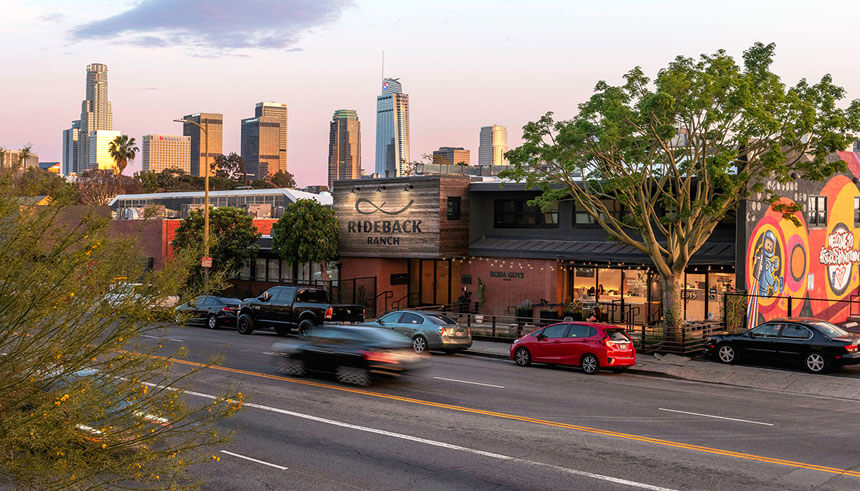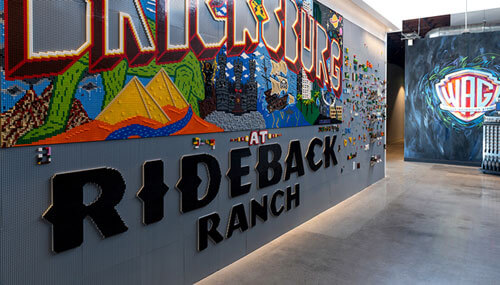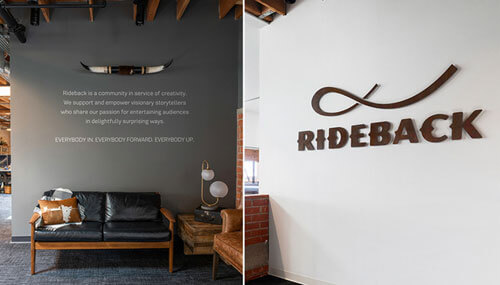Entrepreneur Insight
Does Your Business Need a Rebrand? Here’s What to Do
By Angela Bao

Whether a simple refresh or total redesign, a rebrand can lead to better business health.
Rebranding your business is less a question of “if,” but “when.” On average, organizations and businesses refresh their brand identities once every 7-10 years. Whether that involves a full name change and redesign, or simply refining certain elements of your existing brand, rebranding is necessary for all businesses if they want to remain relevant to their market and audience. Especially for small businesses that may not have the time, manpower or upfront capital to fully flesh out their brand from the get-go, rebranding is an essential part of their growth.
Typically, a company rebrands at an inflection point, says Chad Cipoletti, principal of narrative at Los Angeles-based creative agency Marchio. That could mean your business has just completed a merger or acquisition, has spun off a part of the business, introduced new products or services, changed leadership, or simply feels that current brand is holding back growth, just to name a few reasons. A rebrand can enhance a business’s health by improving sales, margins, employee engagement and employee retention, adds Cipoletti.
However, Cipoletti cautions against doing a rebrand without seriously considering how it fits into your company’s overall business goals and strategy. Each choice needs to reflect a specific purpose and move the company forward in the right direction. “Business and brand are linked,” he explains. “If your business changes or has plans to change, your brand should reflect those changes.”
Understand what you want your brand to be
Cipoletti says that it is common for businesses to go into a rebranding wanting to redo everything, but in reality only needing to revamp a small portion. Sometimes a company only needs a light refresh, where they refine certain elements within their brand, such as updating the look of their logo without completely overhauling it, or clarifying the brand messaging.

“The biggest thing is for people to really start to use the brand every day. The focus of the brand, the story you’re trying to tell, the values of the brand—how are you using those to make decisions on a daily basis?”
“Clients come to us thinking they need to overhaul everything, and often we help them decide what not to do,” he shares. “They might think they need a new name, for example, but what they really need is a new story that changes how people interpret their current name.”
Cipoletti emphasizes the importance of being “focused and intentional” when rebranding, regardless of whether you are a large corporation or a small business. Instead of starting with the visual elements, he says to first consider what you want your business to be known for. “What’s the story you’re trying to tell?” he says to ask yourself. “What are the values that your organization lives by?”
Understanding what your brand is will determine your company’s strategy in its rebrand. “Deciding who you want to be, how you’re going to respond to changes in the market, changes in the customer, setting the strategy for the type of business you either are now or that you want to grow into, can help you make decisions about other parts of your brand,” Cipoletti says.
Plan out your rebrand rollout
When launching a rebrand, preparation is key. You need to decide on a launch date, plan out timelines and deadlines, and make sure everyone involved knows what to do and when to do it. For small businesses, a rebrand may not happen overnight but rather in phases; however, it’s still imperative to keep these factors in mind.
Cipoletti says that a major mistake that businesses make when rebranding is not following through. “The bigger challenge—and where a lot of people stumble—is in sustaining the momentum,” he says. “There’s a big launch, and then a month or two later, if you don’t maintain that or keep feeding that, then it’ll go away.”
Make sure the rebrand resonates internally
Businesses should also incorporate rebranding workshops and messaging to their employees. If businesses want to successfully launch a rebrand, they need to keep reinforcing key branding elements even years down the line. That could involve training employees on the new brand story, reiterating brand values, doing brand voice workshops, and always making sure to keep in mind brand principles when creating new experiences.
“The biggest thing is for people to really start to use the brand every day,” Cipoletti shares. “The focus of the brand, the story you’re trying to tell, the values of the brand—how are you using those to make decisions on a daily basis?”
It’s imperative that employees understand why a rebrand is taking place and for businesses to show that there are deeper reasons for the changes. If a business can show that there is some real thought behind the changes, people are more likely to embrace it, says Cipoletti.
“You have to use the brand to change the incentives and the way people do their jobs,” he advises. “A company can say it’s going to be all about helping customers solve a challenge and want to take time to help them with that, but at the call center, if you’re still getting measured by how quickly you get off the call with the customer, then those two things are in conflict.”
The best way to demonstrate the new brand values is top-down. Company leadership needs to commit to those changes even more strongly than the employees, otherwise the rebrand could fall flat. “If leadership doesn’t make those changes to align the organization with the brand, then employees are going to see it as more of a marketing message and not something that’s rooted in the core principles of the organization,” Cipoletti explains.
Case study: Rideback
Marchio’s client, Rideback (formerly Lin Pictures, which produced hit films like the LEGO Movie franchise) wanted to transform into something more than a production company. Dan Lin, the founder and CEO, already had in mind the name “Rideback,” which is an old Western term for when cowboys would circle back to pick up a fallen rider. Although Rideback would remain a film and television production company, Lin wanted to develop a community that would be a “platform for change” in Hollywood and support innovative storytellers and diverse voices. The idea of Rideback Ranch was born, a co-working space where film industry creatives can collaborate and support each other.
“The business was changing, going from simply being a production company, to building out a creative campus (Rideback Ranch),” explains Cipoletti. “They really wanted to create this space and this place where people can come together to help each other, to challenge each other, to create something extraordinary."

"The brand is the collection of efforts of everybody that works there. If it’s just words on a page, it won’t mean anything—but if it’s something that people take to heart, then it becomes a really successful tool to help drive the business."
Marchio decided to focus on some key elements from Lin Pictures and pull those into Rideback’s new story. “Dan is very selfless. He’s very committed to the staff—he sort of stuck to the tone that you’re not just here to take from people, but to give to people, as well,” shares Cipoletti. Combined with the fact that Rideback had grown rapidly, with a lot more people and production groups in the same space, they had to really think about what they wanted to emphasize the most. That’s how they decided to build the Rideback brand around the tenet of a “community in service of creativity.”
“The idea of service found its way into the story, the community, but also the output—they’re trying to create TV shows, trying to create great movies, creating this sort of brand spirit of ‘everybody up,’ this idea of rideback when you go back and pick up a fallen rider,” Cipoletti emphasizes.
Cipoletti and his team also incorporated the rideback theme into the company’s new visual identity. They used a specially designed typography for the name that incorporated notches in the letters that visually harkens back to Rideback’s cowboy origins, but also “subtly connects the letters to others, so there’s this idea of community coming through,” explains Cipoletti. Even the looping symbol above the company name represents the “literal drawing of a rideback,” while simultaneously suggesting the outline of a saddle or the brim of a cowboy hat.
Of course, the rebrand didn’t stop with the reveal of the new logo; they needed to make sure that those working at and with Rideback understood the core of what the company built its brand on.
“How are we celebrating that idea of service to our community and our neighborhood that we’re in right now? That’s when the brand starts to really come alive—the focus of the story, the focus of the key idea they’re trying to get across, becomes a filter for the decisions that people are making every day,” states Cipoletti. “The brand is the collection of efforts of everybody that works there. If it’s just words on a page, it won’t mean anything—but if it’s something that people take to heart, then it becomes a really successful tool to help drive the business.”
Sign up for the Reach Further Newsletter
We’ll keep you in the know about the latest US-Asia business news and trends.
Suscríbase al boletín Reach Further
Lo mantendremos informado sobre las últimas noticias y tendencias comerciales entre Estados Unidos y China.

